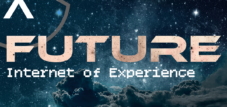The economic capitulation of the new beginning: When the internet and its offspring were still digital pioneers
Xpert pre-release
Language selection 📢
Published on: November 1, 2025 / Updated on: November 1, 2025 – Author: Konrad Wolfenstein

The economic capitulation of the new beginning: When the internet and its offspring were still digital pioneers – Image: Xpert.Digital
Experiment, hype, profit: The inevitable path of every digital innovation - How pioneers became cold-blooded profiteers
From the Wild West to the shopping mall: The lost soul of the internet – Was everything better online back then? A digital journey through time, from SEO to social media.
Do you remember when the internet was an adventure? An era of discovery, when pioneers explored digital territories without knowing where the journey would lead. This subversive, creative soul of the internet has given way to a highly efficient system. This text analyzes the inexorable shift from wild exploration—risk-taking experimentation in unknown territory—to disciplined exploitation, the ruthless optimization of existing models for profit and efficiency.
This transition is no accident, but rather an economic lesson illustrating the life cycle of any transformative technology. We embark on a journey through time, beginning in the early 1990s when the World Wide Web was still an academic experiment, and trace how revolutionary ideas evolved into standardized services. Using key technologies such as SEO, social media, e-commerce, and the emerging Extended Reality (XR), we trace how each of these innovations followed the same trajectory: from a phase of uncertainty and creativity, driven by visionaries and early adopters, to crossing the chasm into the mass market.
The text examines how this maturation process inevitably led to market concentration, the dominance of giants like Google and Meta, and the commercialization of once open spaces. It concludes with the critical question: Is this cycle of innovation and subsequent appropriation unavoidable? And what does this insight mean for the next major technological wave, artificial intelligence, which is already showing signs of following the same path from exploratory tool to controlled profit machine?
Suitable for:
Is history repeating itself? Why AI is also becoming a profit machine, rather than a tool for discovery.
The internet is dead. Not literally, of course, but its subversive soul, its disruptive core, has long since been co-opted by the mainstream, standardized, optimized, and broken down into measurable return on investment metrics. What once began as a radical experiment, an exploration of unknown digital territories, has transformed into a highly efficient exploitation machine. This change is neither accidental nor regrettable, but rather the inevitable fate of any transformative innovation. The history of the internet and its technological offspring reads like an economic textbook on the life cycle of disruptive technologies, in which wild pioneers become disciplined profiteers and revolutionary tools become standardized services.
The beginnings: When the web learned to walk
In the nebulous early days of the 1990s, the internet itself was exploration business in its purest form. The commercialization of the World Wide Web began in 1994 with the release of the Netscape Navigator browser, which laid the foundation for mass internet use. By 1996, there were barely a hundred thousand websites worldwide, and the medium was still in that experimental phase where no one knew exactly which applications would prevail or how money could even be made from it. The National Science Foundation had previously reserved the internet strictly for academic and research purposes, and the Acceptable Use Policy explicitly prohibited commercial activities. There was widespread fear that the internet would be corrupted and devalued by commercial interests.
But as early as 1984, a decade before its widespread popularity, CompuServe had established the Consumer Information Service, an electronic shopping mall that allowed subscribers to shop at retailers like American Express and Sears. This was an early harbinger of things to come. The decisive turning point came in 1993 when Tim Berners-Lee and CERN decided to make the source code of the World Wide Web freely available. This decision catalyzed a global wave of creativity and innovation that transformed the internet from a niche academic tool into a transformative economic force.
The theoretical foundation: On innovators, abysses, and the maturation process
During this phase, the internet embodied all the characteristics of exploratory innovation according to James March's ambidexterity model. Exploration means the search for new possibilities, experimenting in unknown territory, a willingness to take risks, and the acceptance of uncertainty in the face of long-term and diffuse benefits. The early internet pioneers, from the founders of Amazon and eBay to the developers of the first search engines like Archie, Wandex, and AltaVista, operated in an environment of fundamental uncertainty. They didn't know whether their business models would work, whether consumers would be willing to shop online, or whether the technical infrastructure would even be scalable.
Everett Rogers' 1962 diffusion theory precisely describes how innovations spread through social systems. The first two percent of users are the innovators, technology-enthusiastic risk-takers who try out new solutions for their own sake. They are followed by the early adopters, roughly thirteen percent, who, as visionaries, recognize strategic advantages in new technologies and act as opinion leaders in their communities. The critical mass, the early majority, comprising thirty-four percent, consists of pragmatists who demand proof of reliability and clear value propositions before adopting. Precisely between the early adopters and the early majority lies the chasm, the gap identified by Geoffrey Moore in his influential 1991 work, "Crossing the Chasm."
The internet of the early to mid-1990s was populated by innovators and early adopters. It was an experimental space for tech-savvy enthusiasts and visionary entrepreneurs. The vast majority of the population was skeptical or indifferent to the medium. E-commerce was considered risky, the security of online transactions was questionable, and the user experience was rudimentary. Amazon, founded in 1994 by Jeff Bezos, began as an online bookseller with the vision of offering the world's most comprehensive selection of books. eBay emerged in 1995 from the idea of creating an efficient marketplace for collectors. Both companies operated in largely uncharted territory and had to solve fundamental problems of logistics, payment processing, and building trust.
SEO and SEM: From trickery to data-driven craftsmanship
Search engine optimization, or SEO, emerged in the mid-1990s as a direct response to the advent of the first search engines. The story begins with Archie in 1990, a service that searched FTP servers by filename, followed by Veronica and Jughead. The first true web search engine was Wandex in 1993, developed at MIT. Yahoo launched in 1994 as a manually curated directory, and AltaVista revolutionized search in 1995 with full-text indexing and advanced search operators. The first documented use of the term "search engine optimization" dates back to 1997, when the agency Webstep Marketing used the term in a pitch deck, coinciding with Danny Sullivan's efforts to popularize the concept through Search Engine Watch.
In this early phase, SEO was pure exploration. No one knew the exact algorithms of search engines, there were no established best practices, and optimizers experimented with meta tags, keyword density, and various on-page factors. The famous anecdote of Bob Heyman and Leland Harden, who worked for the band Jefferson Starship and discovered that more frequent mentions of the band's name on their website led to higher rankings, illustrates the experimental nature of this phase. This was essentially early keyword stuffing, a technique that would later be classified as spam, but at the time represented a legitimate exploratory strategy.
Search engine marketing (SEM) developed alongside search engine optimization (SEO). The real innovation came in 1998 when GoTo.com introduced the first pay-per-click (PPC) model, where advertisers could bid for top positions in search results and only paid for clicks. This model aligned the interests of search engines, advertisers, and users. Google launched Google AdWords in October 2000 with just 350 advertisers and introduced a crucial innovation: instead of basing rankings solely on bid size, Google integrated the click-through rate (CTR) into its ranking algorithm. This Quality Score meant that relevant ads that users actually clicked on could rank higher than irrelevant ads with higher bids.
This already marked a subtle transition from exploration to exploitation. With the introduction of measurable metrics such as click-through rates, conversion tracking, and return on investment, SEM increasingly became a data-driven optimization discipline. The mid-2000s saw a rapid development of SEM capabilities: improved targeting options based on geography and demographics, ad extensions, remarketing features from 2010 onward, and sophisticated analytics. SEM transformed from an experimental medium into a highly efficient channel with clear ROI metrics and standardized practices.
Social Media: The transformation from digital campfire to advertising machine
Social media followed a similar trajectory. Its roots extend back to early online communities like The WELL from 1985 and Bulletin Board Systems of the 1980s. Friendster, launched in 2002, was the near precursor to modern social media platforms, allowing users to create profiles, share content, and connect with friends. MySpace followed in 2003 and became the dominant platform between 2005 and 2008, particularly among music lovers due to its ability to embed music and YouTube videos in profiles.
LinkedIn launched in 2003 as a professional network with a strong business-to-business focus. But the real game-changer was Facebook, founded in 2004 by Mark Zuckerberg as a network for Harvard students. After opening to the general public in 2006, Facebook grew explosively to fifty million users by the end of that year. A month later, in November 2006, Facebook launched Ads, and Mark Zuckerberg announced that Facebook Ads represented a completely new kind of online advertising: instead of pushing media to people, marketers would now become part of the conversation by using the social graph just like the users themselves.
Twitter, founded in 2006, added the dimension of real-time communication, enabling brands to react quickly and maintain visibility. YouTube, acquired by Google in 2006, transformed video into a central marketing tool. Instagram launched in 2010 and shifted the focus to visual storytelling. By the early 2000s, these platforms had begun integrating paid advertising features: Facebook Ads in 2007, Twitter Promoted Tweets in 2010, and all the others followed with precise audience targeting capabilities.
In its early stages, roughly from 2004 to 2010, social media marketing was largely exploratory. Companies experimented with organic posts, tried to build communities, and learned how to interact with users in a two-way dialogue. There were no established playbooks, no standardized metrics, and a lot of trial and error. Brands like Daniel Wellington used Instagram influencers to increase product visibility and build consumer trust, while Sephora used AR filters for virtual makeup try-ons.
However, with the introduction of paid promotions and the maturation of the platforms, social media marketing underwent a fundamental transformation. What was once organic community building became a data-driven discipline with dynamic ads, A/B testing, predictive analytics, and personalized content. The platforms' algorithms became increasingly opaque and favored paid content over organic reach, forcing companies to allocate budgets to paid social media. Social media marketing had crossed the chasm and become mainstream, an integral part of every marketing strategy with clear KPIs and ROI expectations.
Extended Reality (XR): The next wave on the fringes of the mainstream
Extended Reality (XR) encompasses Virtual Reality, Augmented Reality, and Mixed Reality. While XR's history dates back to the 1950s and 60s with early VR experiments, it wasn't until 2010 that XR truly gained momentum. That year, eighteen-year-old Palmer Luckey created the prototype of the Oculus Rift VR headset, featuring a revolutionary 90-degree field of view and leveraging computer processing power. A Kickstarter campaign raised $2.4 million, and Luckey's company, Oculus VR, was acquired by Facebook in 2014 for approximately $2 billion.
2014 was a particularly eventful year for XR: Sony and Samsung announced their own VR headsets, Google released Cardboard, a low-cost VR viewer for smartphones, and introduced Google Glass, AR glasses that overlaid digital information onto the real world. Consumer reaction to Google Glass was lukewarm, with users being mocked as “glassholes,” but enterprise editions later proved more successful. Microsoft launched the HoloLens headset in 2016, introducing the concept of mixed reality, a more interactive AR experience. That same year, Pokémon GO brought AR into the mainstream, and by the end of 2016, hundreds of companies were developing VR and AR experiences.
The XR market reached $7.55 billion in 2025 and is projected to grow to $44.14 billion by 2030, with a compound annual growth rate (CAGR) of 42.36 percent. The proliferation of XR across various sectors, including gaming, entertainment, healthcare, education, manufacturing, and retail, demonstrates that XR is no longer limited to gaming. In healthcare, XR is used for surgical simulations and patient rehabilitation, while in manufacturing, it is used for design and training. Companies are adopting XR technology for marketing, design, and product demonstrations, offering cost-effective and engaging solutions.
Despite this growth, XR is still in a relatively early stage of adoption, oscillating between exploration and early exploitation. High initial hardware and software costs, concerns about the health effects of prolonged use, and technical challenges such as lack of comfort, battery life, and image quality present significant barriers. XR is not yet fully mainstream, but signs indicate it is on its way to crossing the chasm, particularly with the integration of 5G networks, which enable low latency and improved user experiences.
🎯🎯🎯 Benefit from Xpert.Digital's extensive, five-fold expertise in a comprehensive service package | BD, R&D, XR, PR & Digital Visibility Optimization

Benefit from Xpert.Digital's extensive, fivefold expertise in a comprehensive service package | R&D, XR, PR & Digital Visibility Optimization - Image: Xpert.Digital
Xpert.Digital has in-depth knowledge of various industries. This allows us to develop tailor-made strategies that are tailored precisely to the requirements and challenges of your specific market segment. By continually analyzing market trends and following industry developments, we can act with foresight and offer innovative solutions. Through the combination of experience and knowledge, we generate added value and give our customers a decisive competitive advantage.
More about it here:
From experiment to scaling: The rules of the exploration-vs-exploitation cycle
E-commerce: The evolution towards a seamless shopping experience
E-commerce itself went through a similar cycle. The history of e-commerce begins in the late seventies and eighties with Electronic Data Interchange (EDI), which enabled companies to exchange sales documents electronically. But the real breakthrough came in 1994 with the rise of the World Wide Web and the launch of the first online shops. Amazon and eBay, both founded in the mid-nineties, revolutionized the way we buy goods and laid the foundation for modern e-commerce.
In the 1990s, e-commerce was purely an exploratory business. The first online shops were rudimentary, payment security was questionable, and many consumers were skeptical about disclosing credit card information online. Acceptance rates were low, and it took considerable persuasion to convince users that online shopping was safe and convenient. The dot-com bubble, which burst between 2000 and 2002, revealed the limitations of inflated expectations and a lack of sustainable business models.
But after the bubble burst, e-commerce steadily recovered. The 2000s saw the maturation of technology, the introduction of search engine optimization and pay-per-click advertising, and the arrival of Web 2.0 technologies that enabled more interactive websites. Social media networks like Facebook and Twitter further transformed the landscape. The rise of mobile technology had a significant impact on e-commerce; the proliferation of smartphones made online shopping more convenient, and consumers could make purchases anytime, anywhere.
Multi-channel strategies evolved into omnichannel approaches, where retailers sought to deliver a consistent brand experience across various channels. The term “omnichannel” was coined by IDC’s Lesley Hand and described a strategy that coordinated online and offline channels to provide customers with a seamless experience. Distributed order management went mainstream in 2005 when Sterling Commerce acquired Yantra, and retailers began using physical stores for fulfillment.
The latest evolution is Unified Commerce, which goes beyond omnichannel. While omnichannel emphasizes the coordination of channels, Unified Commerce focuses on the integration and unification of all retail touchpoints. It strives to eliminate the conventional boundaries between online and offline retail and present a vision where the customer experience is not only seamless but also singular and consistent across all platforms. Unified Commerce integrates not only the customer-facing elements but also the underlying systems and processes that power the retail ecosystem, from inventory management to customer data.
This transition from multi-channel to omnichannel to unified commerce reflects the classic shift from exploration to exploitation. Multi-channel was experimental; companies tried out different channels without necessarily integrating them. Omnichannel was an attempt to coordinate these channels and offer a more consistent experience. Unified commerce represents full exploitation, where all systems are deeply integrated, data is shared in real time, and efficiency is maximized.
Suitable for:
The Mechanics of Change: Exploration versus Exploitation
The underlying dynamics of all these developments can be understood through ambidexterity theory and the concept of exploration versus exploitation. In his seminal 1991 article, James March defined exploration as the search for new opportunities, experimentation, risk-taking, and acceptance of uncertainty, while exploitation means the refinement and extension of existing skills, technologies, and paradigms, with a focus on efficiency, reliability, and short time horizons.
Organizations and markets need both modes. Exploration is necessary to remain competitive in the long term, discover new opportunities, and generate innovations. Exploitation is required to secure short-term returns, optimize processes, and defend market share. The central dilemma is that the two modes are often in conflict: they compete for the same resources, require different organizational structures and cultures, and the returns differ fundamentally in terms of security, time horizon, and certainty.
The danger lies in the fact that adaptive processes refine exploitation faster than exploration, which is effective in the short term but self-destructive in the long run. Companies that focus exclusively on exploitation fall into competency traps and miss out on disruptive changes. At the same time, organizations that only explore can never reap the rewards of their innovations or establish sustainable business models.
The history of the internet and its technological offspring perfectly illustrates this cycle. In the initial phase, exploration dominates: pioneers experiment, fail, learn, and iterate. Returns are uncertain, time horizons are long, and the organizational distance between action and adoption is significant. Innovators and early adopters drive development, often without a clear idea of how profitability can be achieved.
Then comes the moment when the innovation crosses the chasm and reaches the early majority. This typically occurs when the technology is mature enough to offer reliable solutions, when clear use cases can be demonstrated, and when reference customers and success stories are available. Geoffrey Moore describes how crossing the chasm can be achieved by first targeting a very specific niche market within the early majority to build a pragmatic, referenceable customer base. Segmentation is crucial: focusing all marketing resources on one specific segment at a time and ensuring market leadership within that segment before moving on to the next.
With the crossing of the chasm, the focus shifts from exploration to exploitation. Technology becomes standardized, best practices are established, and competition intensifies. Companies begin to prioritize efficiency, cost reduction, and process optimization. Measurable KPIs such as conversion rates, customer acquisition costs, return on ad spend, and customer lifetime value become the dominant metrics. Marketing transforms from a creative, experimental endeavor into a data-driven science.
Search engine optimization (SEO) evolved from experimental keyword stuffing and meta tag manipulation in the 1990s to a highly complex discipline with hundreds of ranking factors, sophisticated algorithms, and constant updates like Google's Panda in 2011 and Penguin in 2012, which penalized low-quality content and manipulative link-building practices. Modern SEO requires technical knowledge of website architecture, mobile-first indexing, core web vitals, structured data, semantic search, and content quality. Today, SEO is primarily exploitation: optimizing existing processes to maximize traffic and conversions.
Search engine marketing has transformed from rudimentary pay-per-click ads into a sophisticated system with automated bidding strategies, machine learning-based optimizations, advanced targeting options based on intent, device, location, demographics, and custom audiences, as well as integrated analytics dashboards that measure every aspect of campaign performance. SEM has also become an exploitation discipline, focusing on maximizing ROI, optimizing conversion rates, and cost efficiency.
Social media marketing followed the same path. What began as organic community building has evolved into a highly strategic discipline encompassing paid social advertising, influencer collaborations, user-generated content campaigns, social listening, sentiment analysis, and comprehensive analytics. The platforms themselves have transformed from open, experimental spaces into closed ecosystems with proprietary algorithms that throttle organic reach in favor of paid content. Today, social media marketing is an exploitation activity where brands precisely target audiences, conduct A/B tests, analyze performance data, and continuously optimize.
E-commerce has evolved from experimental online shops to a mature ecosystem with standardized platforms like Shopify, WooCommerce, Magento, and BigCommerce. Unified commerce represents the pinnacle of this exploitation: all channels are deeply integrated, data flows in real time, inventory management is synchronized across all touchpoints, and the customer experience is consistent across all platforms. E-commerce is a highly optimized, data-driven discipline that focuses on conversion rate optimization, personalization, recommendation engines, and seamless checkout processes.
Extended Reality is still in its early stages, but the patterns are becoming apparent. While XR was experimental and niche in the 2010s, with high costs and limited applications, it is now beginning to enter the mainstream. Companies like Microsoft, Meta, Apple, and Google are investing heavily in XR, and use cases are expanding beyond gaming and entertainment into areas such as healthcare, education, retail, and manufacturing. With improved hardware, reduced costs, and integration with other technologies like 5G and AI, XR is expected to cross the chasm and become a mainstream technology increasingly focused on exploitation.
This transformation from exploration to exploitation is neither good nor bad, but inevitable and necessary. Without exploration, there is no innovation, no new markets, no disruptive business models. Without exploitation, there is no profitability, no scaling, no sustainable value creation. The transition marks the maturation of a technology and its integration into the economic and social fabric.
The consequences of dominance: concentration, commercialization, and control.
But this transition has profound implications. What was once an open, democratic space for experimentation and creativity is becoming a market dominated by a few large players. Barriers to entry are rising because of increasing technical complexity, rising advertising costs, and the benefits of network effects and economies of scale enjoyed by established players. The diversity and decentralization of the early days are giving way to concentration and oligopoly.
Google dominates search with over 90 percent market share in many countries, and Google Ads accounts for 96 percent of company revenue. Facebook, Instagram, WhatsApp, and other platforms belong to Meta, which dominates the social media market. Amazon controls a significant share of e-commerce, particularly in the US. These platforms have proprietary algorithms, opaque ranking factors, and the power to control visibility and reach, which disadvantages smaller players.
Commoditization theory describes how technologies become commodities over time. A product or service becomes a commodity when it becomes interchangeable, differentiation is minimal, and competition is primarily based on price. Nicholas Carr argued in his influential 2003 HBR article, “IT Doesn't Matter,” that IT itself would become a commodity and could no longer serve as a strategic differentiator.
While this claim is controversial, it nevertheless highlights an important trend: many digital technologies and services have indeed become commoditized. Cloud computing, which was novel and experimental in the early 2000s, is now a standardized service with a few dominant providers such as AWS, Microsoft Azure, and Google Cloud. By 2023, over 90 percent of organizations worldwide had implemented cloud technologies, the highest adoption rate of any emerging technology.
The innovation-to-commodity lifecycle in most mainstream technology markets is shrinking rapidly. Moore's Law and the law of accelerated returns have led to hyperchange, meaning that innovative products that previously took years to reach commodity status are now transformed within months. Consumer Generative AI, with the release of ChatGPT 3.5 in November 2022, went almost instantly from nascent to commodified, reaching one hundred million users in just a few months—the fastest adoption rate of any technology.
This commoditization has advantages and disadvantages. On the one hand, it lowers costs, increases accessibility, and allows more people and companies to benefit from the technologies. On the other hand, it reduces opportunities for strategic differentiation, increases price pressure, and concentrates power in the hands of a few large providers. It becomes more difficult for smaller companies and startups to differentiate themselves and build a sustainable competitive advantage.
The advantages of being a first mover play a crucial role in this cycle. Early adopters and first movers enjoy unique benefits: They can set industry standards, secure early market share, build strong brand awareness and customer loyalty, achieve valuable learning curve effects, and forge strategic partnerships. Amazon, Google, Facebook, and other giants have profited massively from their first-mover status in their respective fields.
However, first-mover advantages are not guaranteed. Nearly half of all first movers fail, often because they misjudge market readiness, lack the resources to maintain their lead, or because followers learn from the pioneers' mistakes and develop better products. The key is execution: First movers who build robust infrastructures, forge strategic partnerships, and iterate rapidly based on market feedback are well-positioned to secure long-term competitive advantages.
The diffusion of innovation theory also emphasizes the importance of the social context. Innovations do not spread automatically; they require communication channels, social networks, and the building of trust. Influencers and opinion leaders play a critical role in legitimizing and normalizing innovations. Early adopters act as a bridge between innovators and the early majority by providing testimonials, demonstrating use cases, and mitigating risks.
Geoffrey Moore's Crossing-the-Chasm concept highlights that the transition from early adopters to the early majority requires a fundamental shift in strategy. Visionary messages that appeal to early adopters don't work for pragmatists. The early majority needs complete product solutions, clear customer references, reliable infrastructure, and proven ROI. Companies must adapt their positioning, messaging, sales strategies, and product roadmaps to address these different needs.
Organizational ambidexterity describes a company's ability to pursue both exploration and exploitation simultaneously. Tushman and O'Reilly argue that successful ambidextrous organizations utilize structural separation: dedicated units for exploration and exploitation with distinct processes, cultures, and incentives. Exploration units are flexible, experimental, and have long-term horizons. Exploitation units are efficient, disciplined, and have short-term horizons.
Contextual ambidexterity allows individuals to switch between exploration and exploitation, often supported by flexible work structures like Google's famous 20 percent time, which allows employees to work on their own projects. However, these approaches are not trivial to implement. The qualities that make organizations effective exploiters are fundamentally different from those that enable effective exploration. Exploration requires creativity, a willingness to take risks, tolerance for ambiguity, and a long-term perspective. Exploitation requires efficiency, discipline, process orientation, and a short-term focus on results.
Combining exploration and exploitation within the same organization is often very difficult because explorers ultimately aim to make the work of exploiters obsolete. This creates inherent tensions and conflicts over resources, priorities, and strategic direction. Successful ambidextrous organizations need strong leadership that can manage these tensions, clear governance structures for resource allocation and conflict resolution, and a culture that values both exploration and exploitation.
The internet and its technological offspring have gone through this cycle. In the early days, exploration and experimental thinking dominated. Pioneers like Tim Berners-Lee, Jeff Bezos, Larry Page, Sergey Brin, Mark Zuckerberg, and countless others created new paradigms, tested hypotheses, and iterated rapidly. The atmosphere was characterized by openness, decentralization, and democratic participation. The internet was seen as a transformative medium that would dissolve hierarchies, democratize knowledge, and enable new forms of collaboration.
Over time, with increasing commercialization, the focus shifted towards exploitation. Companies optimized their processes, platforms developed proprietary algorithms, and competition intensified. Metrics became more granular, analyses deeper, and optimizations more continuous. Marketing transformed from a creative craft into a data-driven science, incorporating conversion rate optimization, A/B testing, multivariate testing, heatmaps, user journey mapping, attribution modeling, predictive analytics, and machine learning.
This exploitation-oriented approach has undoubtedly led to enormous efficiency gains. Conversion rates increased, customer acquisition costs decreased, and ROI improved. Companies were able to precisely measure which channels, campaigns, and tactics delivered the best results and allocate their resources accordingly. According to VentureBeat, the median ROI on conversion rate optimization tools is over 200 percent, underscoring the effectiveness of these approaches.
However, this intense focus on exploitation also carries risks. Companies can fall into competency traps, optimizing existing skills and processes to such an extent that they become incapable of recognizing or responding to disruptive changes. March warned that adaptive processes tend to refine exploitation faster than exploration, which is effective in the short term but self-destructive in the long run. Organizations that exclusively exploit miss out on new technologies, changing customer preferences, and emerging business models.
The dominance of a few large platforms has transformed the internet from an open, decentralized network into a gatekeeper-controlled ecosystem. Google determines which websites appear in search results. Facebook and Instagram determine which content users see. Amazon determines which products are prominently displayed. These platforms use their power to prioritize their own interests, often at the expense of smaller players. Barriers to entry have risen, organic reach has declined, and paid promotions have become virtually mandatory.
Shoshana Zuboff's critique of surveillance capitalism argues that the business model of these platforms is based on the massive collection, analysis, and monetization of personal data. Users are not customers, but products whose attention and data are sold to advertisers. The algorithms are optimized to maximize engagement, often at the expense of information quality, mental well-being, and social cohesion. The consequences include misinformation, polarization, addictive behavior, and eroded trust in institutions.
GDPR regulations in Europe and similar initiatives worldwide attempt to curb some of these excesses and give users more control over their data. However, the fundamental dynamic remains: the dominant platforms wield enormous power, and competition is limited. The original vision of an open, democratic internet has given way to a reality in which a few corporations control the digital infrastructure.
Our recommendation: 🌍 Limitless reach 🔗 Networked 🌐 Multilingual 💪 Strong sales: 💡 Authentic with strategy 🚀 Innovation meets 🧠 Intuition
At a time when a company's digital presence determines its success, the challenge is how to make this presence authentic, individual and far-reaching. Xpert.Digital offers an innovative solution that positions itself as an intersection between an industry hub, a blog and a brand ambassador. It combines the advantages of communication and sales channels in a single platform and enables publication in 18 different languages. The cooperation with partner portals and the possibility of publishing articles on Google News and a press distribution list with around 8,000 journalists and readers maximize the reach and visibility of the content. This represents an essential factor in external sales & marketing (SMarketing).
More about it here:
Save the experimental culture of the internet!
Will AI repeat the fate of its predecessors?
The question is whether this cycle is inevitable or whether alternative paths are possible. Could technologies and markets be designed to allow for longer periods of exploration without inevitably leading to exploitation and concentration? Open-source movements, decentralized technologies like blockchain and federated social media, and regulatory interventions such as antitrust measures attempt to offer alternatives.
But the economic incentives and market dynamics are powerful. Network effects favor large platforms: the more users a platform has, the more valuable it becomes for each individual user, leading to winner-take-all markets. Economies of scale in infrastructure, data analytics, and algorithm development benefit large companies with deep pockets. Switching costs and lock-in effects make it difficult for users to switch to alternatives.
The commoditization of many digital technologies intensifies these dynamics. When technologies become commodities, companies no longer differentiate themselves through technological superiority, but rather through network effects, brand power, and ecosystem integration. This further concentrates power in the hands of established players.
The role of regulation is becoming increasingly critical. The EU has taken steps with the Digital Markets Act and the Digital Services Act to curb the power of large platforms, promote competition, and protect user rights. The US is discussing similar measures, although the political landscape is more fragmented. The effectiveness of these regulations remains to be seen, but they signal a growing recognition that unregulated markets can lead to concentration and abuse.
The future of digital technologies will likely be shaped by several opposing forces. On the one hand, existing platforms will continue to dominate, intensify exploitation, and deepen their ecosystems. On the other hand, new technologies such as artificial intelligence, quantum computing, Web3, and decentralized protocols will open up new avenues for exploration. The question is whether these new technologies have the potential to disrupt existing power structures or whether they will ultimately be absorbed and co-opted by established players.
Generative AI is a current example. With the release of ChatGPT at the end of 2022, we experienced an explosive phase of exploration. Hundreds of startups emerged, millions of users experimented with the new capabilities, and countless use cases were tested. However, within just a few months, consolidation began: Large tech companies like Google, Microsoft, and Meta launched their own models, invested heavily in infrastructure and research, and began integrating AI into their existing products.
The AI market shows signs of rapidly transitioning from exploration to exploitation and potentially directly to oligopoly, much like cloud IaaS and enterprise LLMs. Barriers to entry are high due to the required computing power, data volumes, and expertise. Large corporations have a structural advantage here. The original democratic promise of AI—that everyone would have access to transformative capabilities—threatens to become a reality where a few corporations control the AI infrastructure, and smaller players are dependent on their APIs and licenses.
Suitable for:
- “German SMEs want to get back on the road to success with marketing and AI” – or strategic self-deception?
The eternal cycle and the lost soul of the digital
The lesson from the history of the internet and its technological offspring is clear: the transition from exploration to exploitation is inevitable, and with it come fundamental changes in market structure, power dynamics, and access. What begins as an open, experimental space becomes an optimized, controlled system. The pioneers of exploration are replaced by the profiteers of exploitation, or they themselves transform into the latter.
This dynamic is not inherently negative. Exploitation brings efficiency, reliability, and scalability. It enables technologies to move from niche markets to mass adoption and create widespread economic and social value. However, it often goes hand in hand with concentration, centralization of power, and a loss of diversity and openness.
The central challenge lies in finding mechanisms that enable a sustainable balance between exploration and exploitation. At the corporate level, this means ambidextrous organizations that can both explore and exploit without one stifling the other. At the market level, this means regulations that promote competition, prevent lock-in, and lower barriers to entry. At the societal level, this means a critical examination of the implications of digital technologies for power, justice, and democracy.
The internet isn't dead, but its subversive, exploratory soul has been domesticated. SEO, SEM, social media, extended reality, e-commerce, and all the other digital tools and platforms that were once radical experiments are now standardized exploitation practices. This is the natural life cycle of innovation, but it raises the question of where the next wave of exploratory innovation will emerge and whether we can learn from it to avoid the mistakes of the past.
History shows that every generation of technology goes through the same cycle. Telegraphy, telephony, radio, television, personal computing, mobile computing, and now AI—all followed the pattern of exploration to exploitation, of open innovation to controlled commercialization. The question is not whether this cycle will return, but how we can shape it to maximize the benefits of both modes and minimize the drawbacks.
In an increasingly digital world where technology permeates every aspect of our lives, understanding these dynamics is not merely academically interesting, but existentially important. The decisions we make today about regulation, competition, data privacy, and technological architectures will shape the digital landscape for generations to come. The lesson of internet history is that exploration is precious and fragile, and that we must make conscious efforts to preserve spaces for experimentation, diversity, and innovation, even as economic forces relentlessly push toward exploitation and concentration.
Your global marketing and business development partner
☑️ Our business language is English or German
☑️ NEW: Correspondence in your national language!
I would be happy to serve you and my team as a personal advisor.
You can contact me by filling out the contact form or simply call me on +49 89 89 674 804 (Munich) . My email address is: wolfenstein ∂ xpert.digital
I'm looking forward to our joint project.
☑️ SME support in strategy, consulting, planning and implementation
☑️ Creation or realignment of the digital strategy and digitalization
☑️ Expansion and optimization of international sales processes
☑️ Global & Digital B2B trading platforms
☑️ Pioneer Business Development / Marketing / PR / Trade Fairs
B2B support and SaaS for SEO and GEO (AI search) combined: The all-in-one solution for B2B companies

B2B support and SaaS for SEO and GEO (AI search) combined: The all-in-one solution for B2B companies - Image: Xpert.Digital
AI search changes everything: How this SaaS solution is revolutionizing your B2B rankings forever.
The digital landscape for B2B companies is undergoing rapid change. Driven by artificial intelligence, the rules of online visibility are being rewritten. It has always been a challenge for companies to not only be visible in the digital masses, but also to be relevant to the right decision-makers. Traditional SEO strategies and local presence management (geomarketing) are complex, time-consuming, and often a battle against constantly changing algorithms and intense competition.
But what if there were a solution that not only simplifies this process, but makes it smarter, more predictive, and far more effective? This is where the combination of specialized B2B support with a powerful SaaS (Software as a Service) platform, specifically designed for the needs of SEO and GEO in the age of AI search, comes into play.
This new generation of tools no longer relies solely on manual keyword analysis and backlink strategies. Instead, it leverages artificial intelligence to more precisely understand search intent, automatically optimize local ranking factors, and conduct real-time competitive analysis. The result is a proactive, data-driven strategy that gives B2B companies a decisive advantage: They are not only found, but perceived as the authoritative authority in their niche and location.
Here's the symbiosis of B2B support and AI-powered SaaS technology that is transforming SEO and GEO marketing and how your company can benefit from it to grow sustainably in the digital space.
More about it here:




























